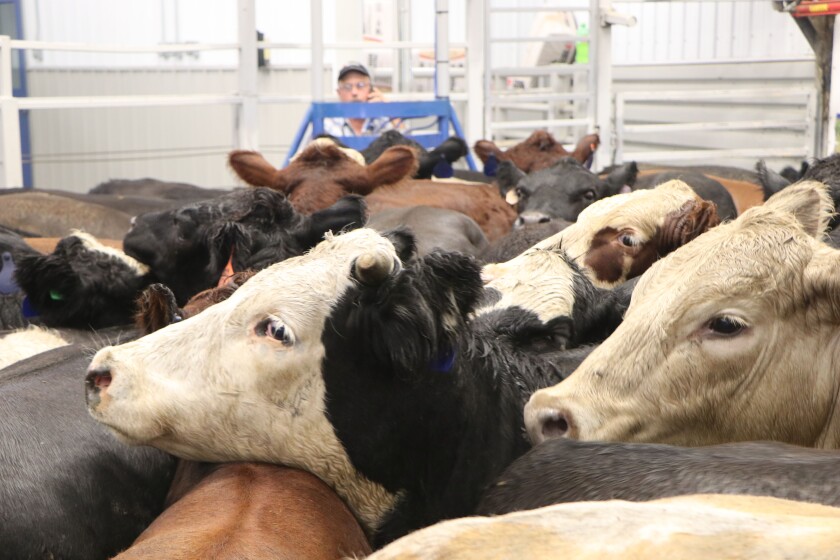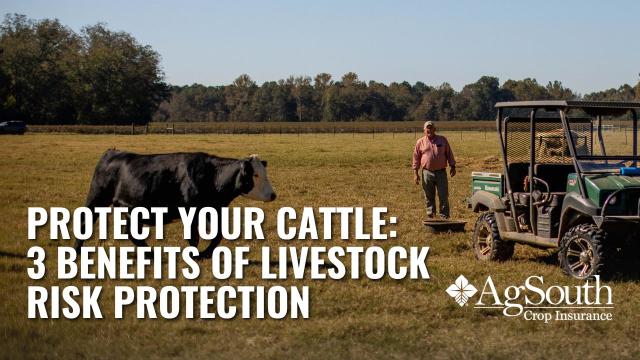Safeguard Your Livestock With Animals Threat Protection (Lrp) Insurance Coverage
Livestock Risk Protection (LRP) insurance coverage provides a critical device for producers to protect their investment and mitigate possible financial risks. By recognizing the ins and outs of LRP insurance coverage, producers can make informed choices that guard their resources.

Recognizing Livestock Threat Protection (LRP) Insurance Coverage
Animals Danger Security (LRP) Insurance coverage gives important coverage for animals manufacturers versus potential economic losses as a result of market cost variations. This sort of insurance permits manufacturers to minimize the danger linked with unforeseeable market conditions, making sure a degree of economic safety and security for their operations. By utilizing LRP Insurance, producers can secure a minimal cost for their livestock, protecting against a decrease in market value that might adversely affect their income.
LRP Insurance runs by supplying coverage for the distinction between the insured rate and the actual market cost at the end of the protection period. Manufacturers can choose protection degrees and coverage periods that straighten with their details requirements and take the chance of tolerance. This flexibility allows manufacturers to tailor their insurance policy to best protect their monetary interests, supplying satisfaction in a naturally unstable market.
Recognizing the details of LRP Insurance policy is crucial for animals manufacturers aiming to safeguard their operations versus market uncertainties. By leveraging this insurance coverage tool efficiently, manufacturers can browse market changes with confidence, making certain the long-lasting stability of their livestock businesses.
Advantages of LRP Insurance Policy for Livestock Producers
Enhancing monetary security and security, Animals Danger Protection (LRP) Insurance policy provides important safeguards versus market rate variations for producers in the livestock sector. One of the essential advantages of LRP Insurance coverage is that it offers manufacturers with a tool to manage the danger connected with unpredictable market value. By allowing manufacturers to establish an ensured rate flooring for their livestock, LRP Insurance aids protect versus prospective losses if market value drop listed below a certain level.
Moreover, LRP Insurance policy enables producers to make more enlightened choices concerning their operations. With the guarantee of a minimal rate for their livestock, manufacturers can plan in advance with better self-confidence, understanding that they have a safeguard in location. This can cause boosted stability in profits and decreased financial tension throughout times of market volatility.
Just How LRP Insurance Policy Mitigates Financial Threats
By offering manufacturers with a dependable safeguard against market value variations, Livestock Threat Protection (LRP) Insurance policy properly safeguards their economic stability and reduces prospective dangers. One key method LRP insurance policy assists mitigate monetary threats is by using security versus unanticipated declines in animals rates. Producers can acquire LRP plans for particular weight varieties of animals, permitting them to hedge against market recessions that can or else lead to substantial economic losses.
Moreover, LRP insurance supplies manufacturers with tranquility of mind, knowing that they have an established level of cost defense. This assurance enables producers to make enlightened decisions concerning their operations without being unduly affected by uncertain market changes. Additionally, by minimizing the monetary uncertainty related to price volatility, LRP insurance coverage enables producers to much better prepare for the future, assign sources effectively, and eventually enhance their total monetary durability.
Steps to Protect LRP Insurance Policy Insurance Coverage
Protecting LRP insurance protection entails a collection of simple steps that can give manufacturers with important protection versus market uncertainties. The very first step in obtaining LRP insurance coverage is to speak to an accredited crop insurance agent. These agents are educated concerning the program and can assist producers via the application procedure. Producers will certainly need to offer fundamental details regarding their livestock operation, such as the sort of animals being insured, the variety of head, and the insurance coverage period desired.
Once the application is sent, manufacturers will need to pay a costs based on the coverage degree and variety of head insured. It is important to assess and comprehend the policy extensively prior to making any type of settlements to guarantee it fulfills the details needs of the operation. Bagley Risk Management. After the premium is paid, producers will certainly obtain a certificate of insurance coverage, recording their protection
Throughout the insurance coverage duration, manufacturers need to maintain in-depth documents of their livestock inventory and market prices. In the occasion of a price decrease, producers can submit an insurance claim with their insurance coverage agent to get compensation for the difference between the insured rate and best site the market price. By following these actions, manufacturers can secure their animals procedure against economic losses triggered by market changes.
Maximizing Worth From LRP Insurance
To remove the complete benefit from Animals Risk Protection Insurance policy, producers have to purposefully use the coverage alternatives available to them. Optimizing the value from LRP insurance policy involves a complete understanding of the policy features and making educated decisions. One essential approach is to thoroughly analyze the insurance coverage levels and period that ideal align with the particular demands and threats of the livestock procedure. Producers must also routinely review and adjust their protection as market conditions and danger factors progress.
Moreover, producers can improve the worth of LRP insurance coverage by leveraging corresponding threat management tools such as futures and options agreements. By branching out risk administration methods, manufacturers can minimize possible losses much more successfully. It is crucial to stay notified concerning market fads, government programs, and industry advancements that might affect animals rates and risk management methods.

Eventually, optimizing the worth from LRP insurance coverage needs aggressive planning, continuous monitoring, and adaptability to transforming circumstances. By taking a strategic method to run the risk of management, manufacturers can secure their animals procedures and enhance their total financial security.

Final Thought
In verdict, Animals Risk Security (LRP) Insurance supplies valuable benefits to animals manufacturers by alleviating financial risks related to changes in market costs. Bagley Risk Management. By protecting LRP insurance protection, producers can protect their animals financial investments and potentially increase their profitability. Comprehending the actions and advantages you can try these out to make best use of worth from LRP insurance policy is important for livestock manufacturers to efficiently manage risks and safeguard their companies
Livestock Risk Defense (LRP) Insurance coverage gives vital insurance coverage for livestock manufacturers against prospective economic losses due to market price variations.Enhancing economic safety and security, Livestock Danger Defense (LRP) Insurance policy uses useful safeguards versus market cost changes for producers in the livestock sector.By supplying manufacturers with a trustworthy safety and security internet against market price his explanation variations, Animals Risk Security (LRP) Insurance coverage effectively safeguards their monetary stability and decreases potential threats. The very first action in getting LRP insurance is to speak to a qualified plant insurance representative.In final thought, Livestock Danger Protection (LRP) Insurance policy offers important advantages to livestock manufacturers by mitigating financial risks associated with fluctuations in market prices.